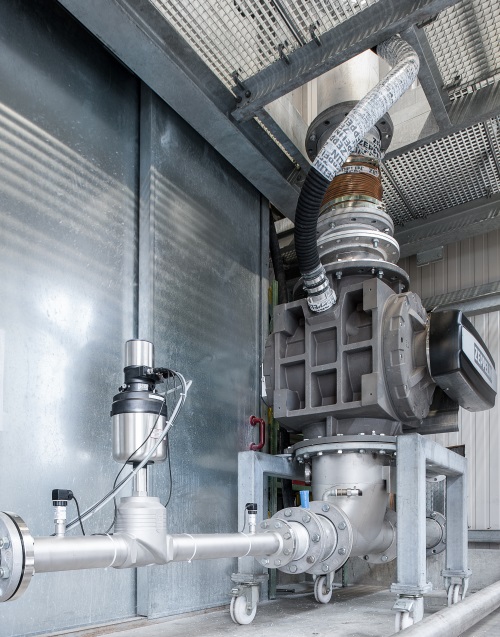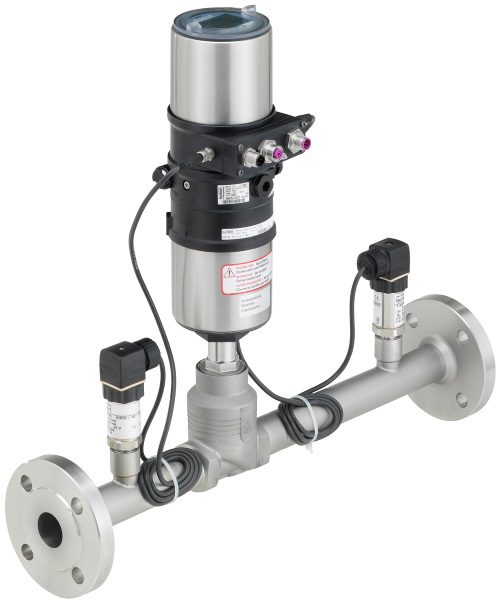The pneumatic conveying systems for the most varied bulk materials, such as those used in the pharmaceutical and food processing industries or in process engineering, are under constant pressure to become more cost-effective while also offering greater reliability and productivity.
To ensure the consistent quality of conveyance and of the conveyed material as well as maximum system efficiency, it is essential to control the quantity of conveying air.
This is necessary, for example, in order to adapt it to the respective conveyed material, to respond to changes in the process or to compensate for leakages.
The compact flow rate controller from Bürkert for example has a continuous valve with a compact process controller on the upper side and two pressure transmitters.
No separate flow meter is required.
The pressure drop is measured using the control valve as a ‘measuring orifice’.
The pressure difference can be used to calculate the nominal volume flow of the gas for a specified density and temperature.
For this purpose, the flow characteristic of the control valve is stored in the process controller.
The volume flow can then be controlled by the opening of the valve.
As a result, all the necessary control technology is integrated in a single compact system — making installation and start-up considerably easier.
The flow rate controller features a high repetitive accuracy of flow set-point values as well as a wide measurement and effective range.
The latter is attributable to the fact that the control valve is used simultaneously as an adjustable orifice plate.
Consequently, the pressure loss is much lower than in conventional solutions that employ a separate orifice plate.
All things considered, this leads to a wider control range than with Laval nozzles, for example.
Automatic air leakage compensation
The flow rate controller offers an automatic air leakage compensation, which helps to make pneumatic conveyance of bulk materials more efficient, for instance, in systems equipped with rotating batch metering units
that are used to dose, feed or deliver bulk material.
The rotating batch metering unit feeds the conveyed product into the volume flow, thereby causing a loss of conveying air, referred to as leakage air, as a side effect.
The leakage air characteristic of every rotating batch metering unit can be saved in the controller.
For every specified inlet pressure, this controller then ‘knows’ how much additional air is required to compensate for the air loss in the system caused by the rotating batch metering unit.
In precisely the same way, the possible partial loss of flow in bypass lines can also be compensated.











